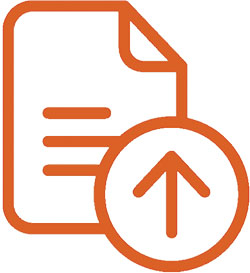Digital
Digital printing, while a relatively new process in the history of printing, has taken the world by storm as an economically viable way to produce small print runs. Digital printing provides high-quality, low quantity economical options for our clients.
Cost: When it comes to printing large formats, the cost of digital printing is typically lower than conventional methods. With most other methods like offset printing, there is extensive preparation to print the image using plates, requiring extra set up fees.
Easily changed: Digital printing allows changes and manipulations to designs to happen quickly. If a project is printed and the image is not satisfactory, it can be changed with minimal effort. Digital data is easily stored and updated.
Consistency: With digital printing, the prints are precise and consistent. This is due to the fact that the image is digitally stored and not handled, eliminating human error.
Fast: Unlike other methods of printing where there is extensive set-up and preparation, digital printing is fast and accurate. Work is typically printed at short notice and The Print Market can usually print on demand.
Evolution: The ‘evolution’ of our digital printing press continues. To maintain our highest quality digital printing we continue to upgrade our digital press to keep the print quality at its best.
About 85% of what we produce is printed by digital printing and Konica Minolta continue to supply our press requirements since 2004.
Offset
Offset printing allows us to print all types of docket books on carbonless paper, numbered and perforated, custom made to suit your business. Docket books are tailored to suit your business, they are not standard off the shelf.
Perforation: A perforation is a small hole in a thin piece of material. There is usually more than one perforation in an organised fashion. Perforations are used to allow easy separation of two sections of the material, such as allowing paper to be torn easily along the line.
Sequential Numbering: A repeated process that allows a business to number all their docket books. The numbering system is continuous, jobs can be repeated with the sequential numbering system continuing where it left off.
Wide Format Printing
As the name suggests, large format printing can produce extra-large prints, but there’s more to it than the sheer size of things. So, if you’ve ever wondered how those larger-than-life prints come together, we may have the answers for you. Read on to find out.
The history of wide format digital printing is very short compared with that of the print industry overall because wide format printing only emerged at the end of last century.
Large format printing, sometimes referred to as wide format printing, is a type of digital printing. Similar to an ink jet printer yet on a much bigger scale, it sprays ink onto the chosen materials to quickly produce quality prints with impeccable detail and accuracy.
Most of us encounter large format prints on a daily basis. For example, in the shape of out-of-home (OOH) advertising, such as billboards, life-sized cut-outs or printed wrapping paper. Products like these often use special materials and finishes to make the print more suitable for locations where it may be exposed to the elements for a long time.
Roll fed and flat bed wide format digital printing refers to a digital printer, which is roll fed or has a table where substrate is loaded. Either the roll is fed through the printer or the table moves under a print head array.
UV solvent inks are then printed direct to the substrate through inkjets. Solvent-based inks adhere to a wide range of substrates and have exceptionally good weather, UV and abrasion resistance.

 File Upload
File Upload Request a Quote
Request a Quote